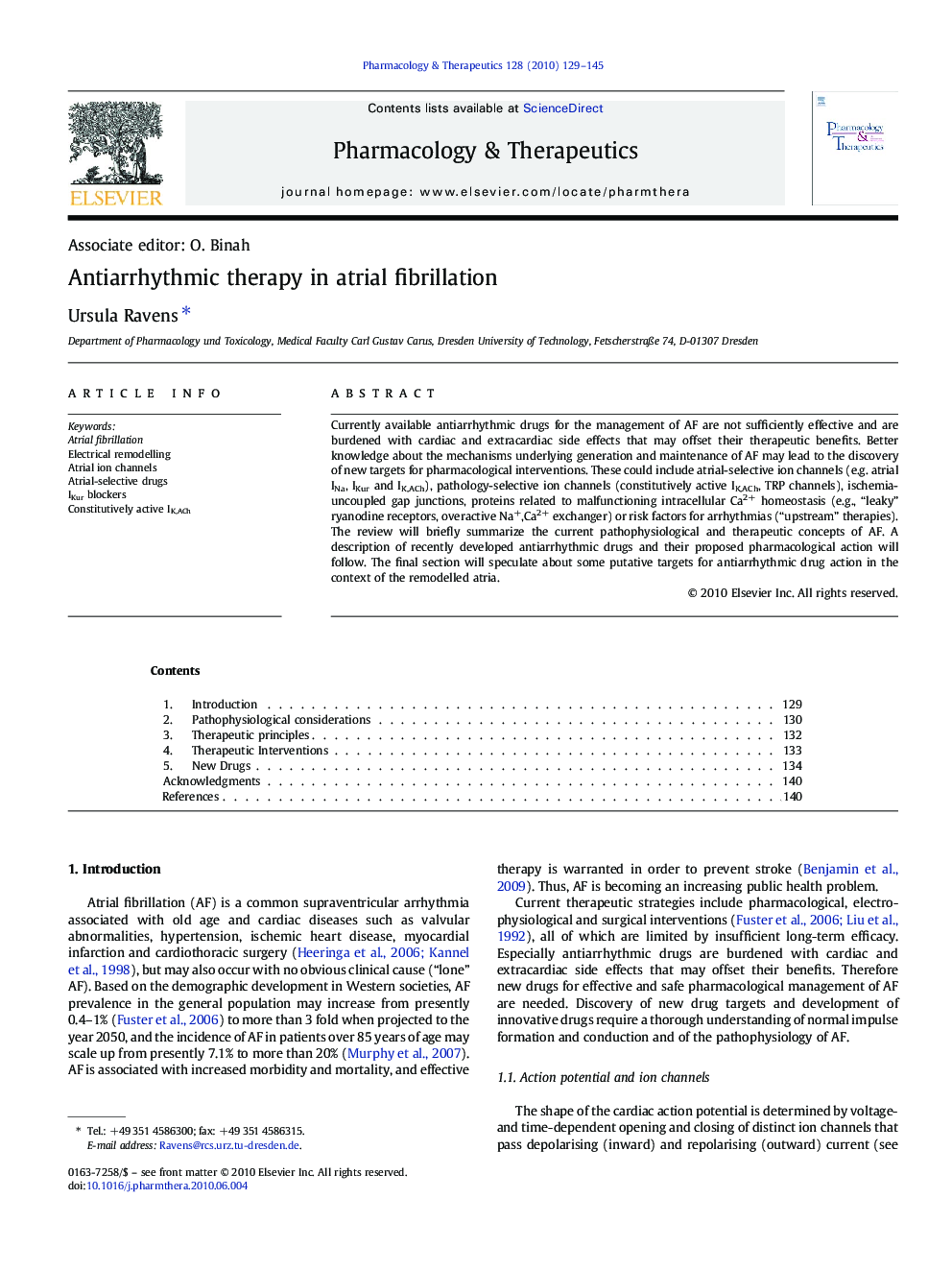| Article ID | Journal | Published Year | Pages | File Type |
|---|---|---|---|---|
| 2563503 | Pharmacology & Therapeutics | 2010 | 17 Pages |
Currently available antiarrhythmic drugs for the management of AF are not sufficiently effective and are burdened with cardiac and extracardiac side effects that may offset their therapeutic benefits. Better knowledge about the mechanisms underlying generation and maintenance of AF may lead to the discovery of new targets for pharmacological interventions. These could include atrial-selective ion channels (e.g. atrial INa, IKur and IK,ACh), pathology-selective ion channels (constitutively active IK,ACh, TRP channels), ischemia-uncoupled gap junctions, proteins related to malfunctioning intracellular Ca2+ homeostasis (e.g., “leaky” ryanodine receptors, overactive Na+,Ca2+ exchanger) or risk factors for arrhythmias (“upstream” therapies). The review will briefly summarize the current pathophysiological and therapeutic concepts of AF. A description of recently developed antiarrhythmic drugs and their proposed pharmacological action will follow. The final section will speculate about some putative targets for antiarrhythmic drug action in the context of the remodelled atria.
